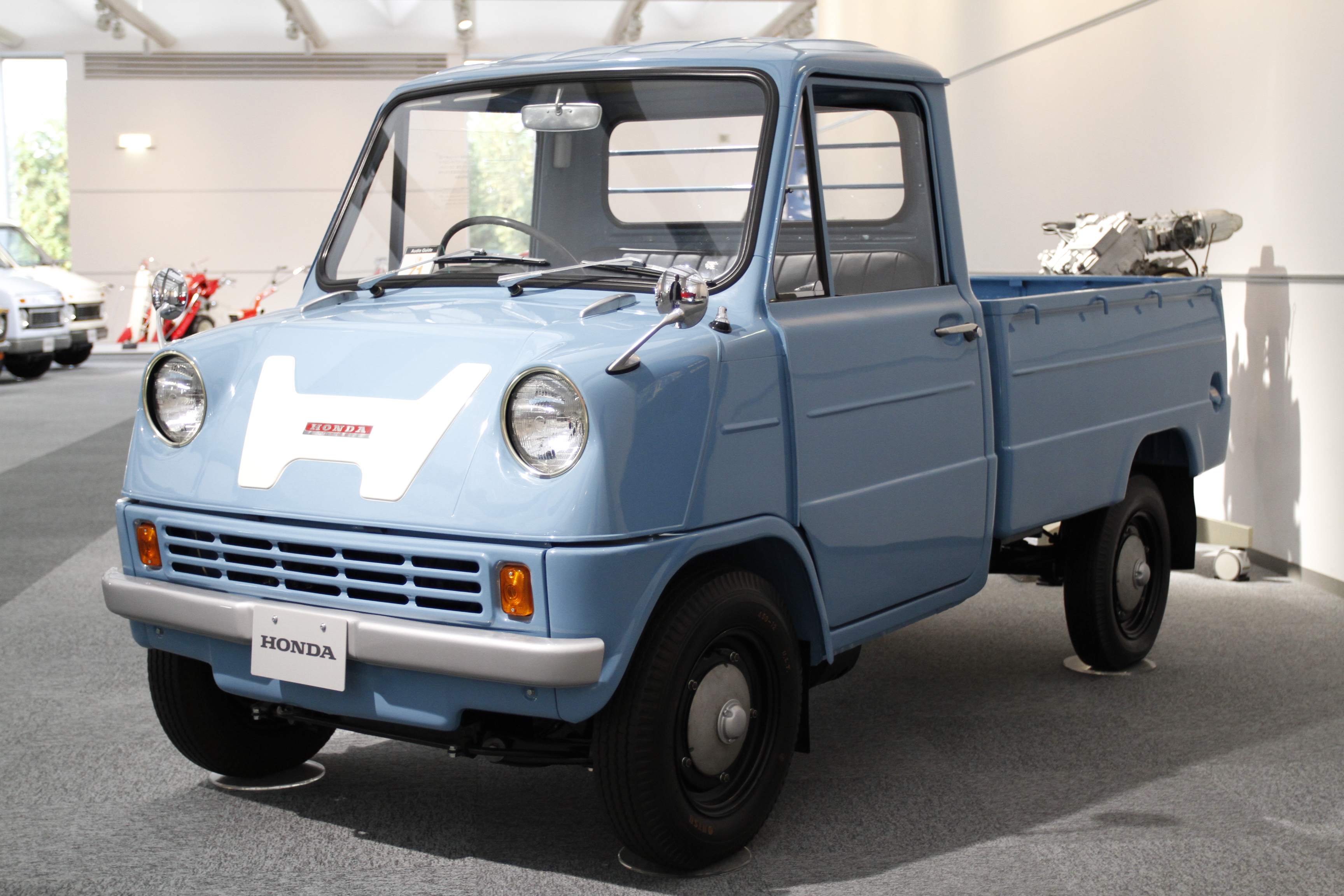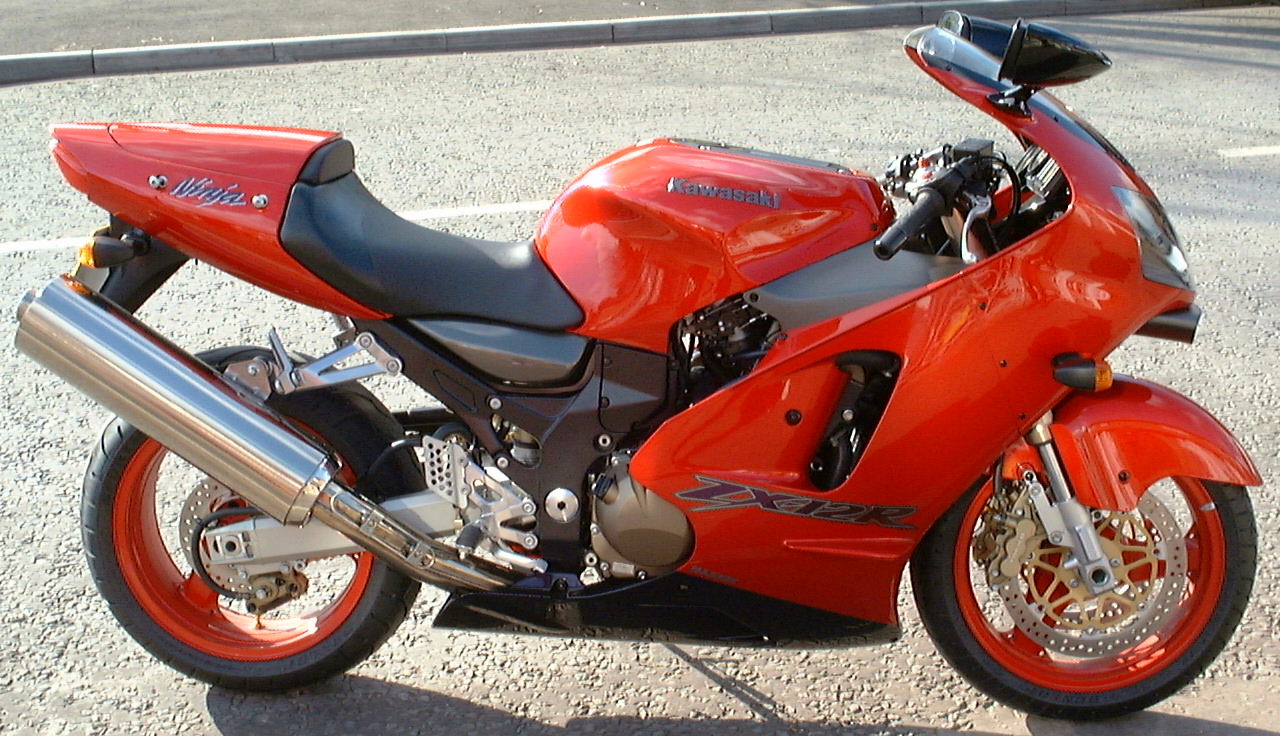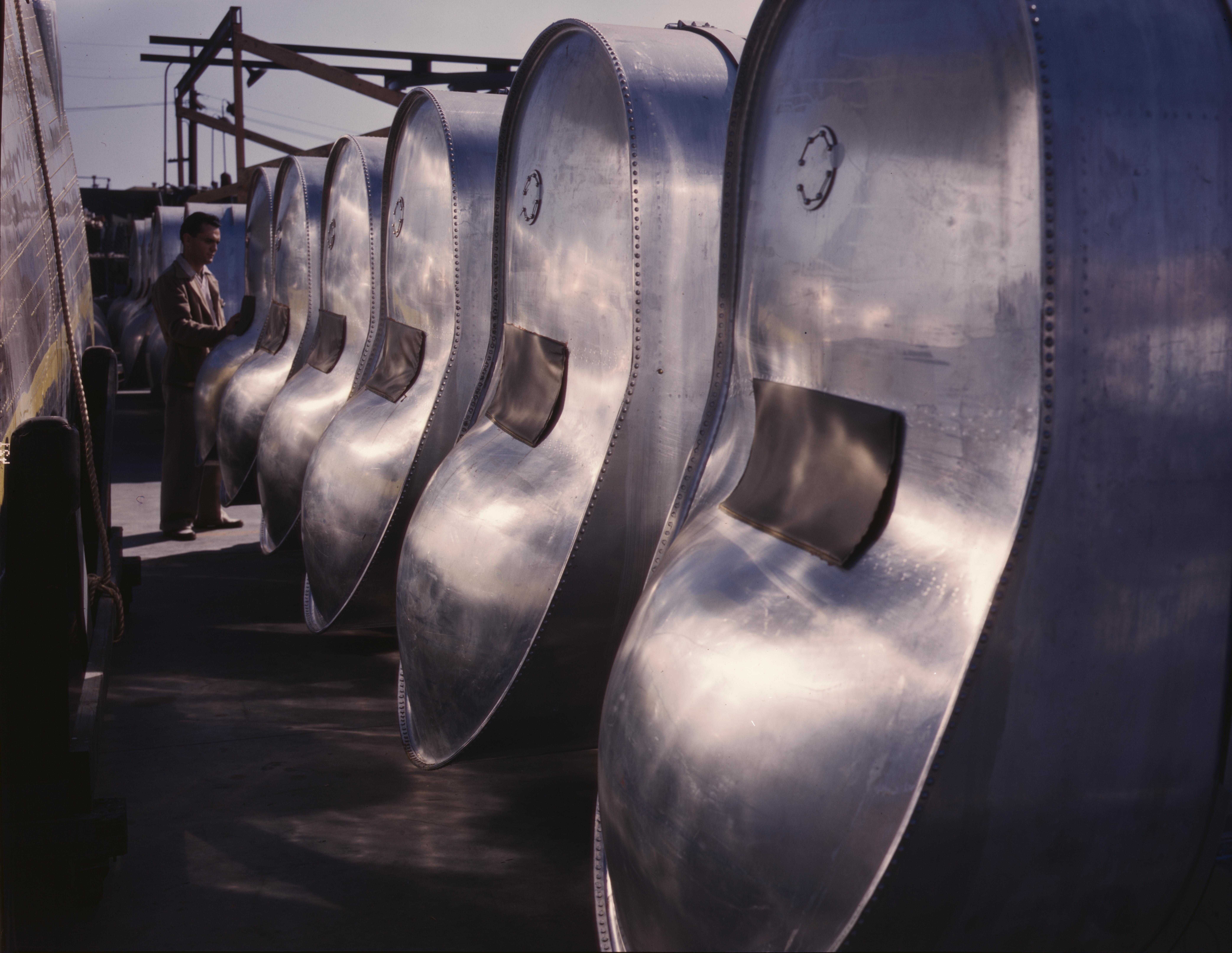|
Honda CX500
The Honda CX series motorcycles, including the GL500 and GL650 Silver Wing variants, were developed and released by Honda in the late 1970s, with production ending in most markets by the mid-1980s. The design included innovative features and technologies that were uncommon or unused at the time such as liquid cooling, electric-only starting, low-maintenance drive shaft, shaft drive, modular wheels, and dual CV-type carburetors that were tuned for reduced emissions. The electronic ignition system was separate from the rest of the electrical system, but the motorcycle could only be started via the start button. Power train Engine The CX series features a longitudinal engine configuration, similar to a rear wheel drive automobile. Unlike the flat twins produced by BMW, the cylinders protrude at an angle above the horizontal. The included angle of the CX is 80°, and the heads are twisted 22° so that the inlet tracts do not interfere with the rider's legs. A camshaft nestles at the ... [...More Info...] [...Related Items...] OR: [Wikipedia] [Google] [Baidu] |
Honda Cx500 1981 Blue Rhs
commonly known as just Honda, is a Japanese multinational corporation, multinational Conglomerate (company), conglomerate automotive manufacturer headquartered in Minato, Tokyo, Japan. Founded in October 1946 by Soichiro Honda, Honda has been the world's largest motorcycle manufacturer since 1959, reaching a production of 500 million . It is also the world's largest manufacturer of internal combustion engines measured by number of units, producing more than 14 million internal combustion engines each year. Honda became the second-largest Japanese automobile manufacturer in 2001. In 2015, Honda was the eighth largest automobile manufacturer in the world. The company has also built and sold the most produced motor vehicle in history, the Honda Super Cub. Honda was the first Japanese automobile manufacturer to release a dedicated luxury brand, Acura, on 27 March 1986. Aside from their core automobile and motorcycle businesses, Honda also manufactures garden equipment, marine eng ... [...More Info...] [...Related Items...] OR: [Wikipedia] [Google] [Baidu] |
Motorcycle Classic
''Motorcycle Classics'' is a motorcycling magazine A magazine is a periodical literature, periodical publication, print or digital, produced on a regular schedule, that contains any of a variety of subject-oriented textual and visual content (media), content forms. Magazines are generally fin ... in the United States. They are a motorcycle magazine publication specializing in classic motorcycles 25 years old and beyond. References External links 2005 establishments in Kansas Motorcycle magazines published in the United States Monthly magazines published in the United States Magazines established in 2005 Magazines published in Kansas Mass media in Topeka, Kansas {{transport-mag-stub ... [...More Info...] [...Related Items...] OR: [Wikipedia] [Google] [Baidu] |
CX500C Blau , an MSX-compatible computer made by Yamaha
{{Letter-NumberCombDisambig ...
CX-5 or CX5 may refer to: *Mazda CX-5, a compact crossover SUV produced by Mazda * Thatcher CX5, an American homebuilt aircraft *CX5, identifier for Cannabinoid receptor type 2, a G protein-coupled receptor from the cannabinoid receptor family *(6724) 1991 CX5, a main-belt minor planet *CX5 Division, a division of the Canadian Xtreme Paintball League See also *Yamaha CX5M Yamaha CX5M is an MSX-system compatible computer that expands upon the normal features expected from these systems with a built-in eight-voice FM synthesizer module, introduced in 1984 by Yamaha Corporation. This FM synth itself has stereo audi ... [...More Info...] [...Related Items...] OR: [Wikipedia] [Google] [Baidu] |
Motorcycle Fairing
A motorcycle fairing is a shell placed over the frame of a motorcycle, especially racing motorcycles and sport bikes, to deflect wind and reduce air drag. The secondary functions are the protection of the rider from airborne hazards and wind-induced hypothermia and of the engine components in the case of an accident. A motorcycle windshield will usually be integrated into the design of the fairing.Tony Foale, ''Motorcycle Handling and Chassis Design'', , Chapter 5: "Aerodynamics" The major benefit of a fairing on sport touring and touring motorcycles is a reduction in aerodynamic drag, which allows for reduced fuel consumption and permits higher speeds at lower engine rpm, which in turn increases engine life. A motorcycle may have a front fairing, a rear fairing, a belly fairing, or any combination of these. Alternatively, a single fairing may partially or fully enclose the entire motorcycle, and may even enclose the rider. History The importance of streamlining was known very ... [...More Info...] [...Related Items...] OR: [Wikipedia] [Google] [Baidu] |
Fuel Tank
A fuel tank (also called a petrol tank or gas tank) is a safe container for Flammability, flammable fluids, often gasoline or diesel fuel. Though any storage tank for fuel may be so called, the term is typically applied to part of an engine system in which the fuel is stored and propelled (Fuel pump (engine), fuel pump) or released (pressurized gas) into an engine. Fuel tanks range in size and complexity from the small plastic tank of a butane lighter (fire starter), lighter to the multi-chambered Cryogenics, cryogenic Space Shuttle external tank. Uses Typically, a fuel tank must allow or provide the following: * Storage of fuel: the system must contain a given quantity of fuel and must avoid leakage and limit evaporative emissions. * Filling: the fuel tank must be filled in a secure way, without sparks. * Provide a method for determining level of fuel in tank, fuel gauge, gauging (the remaining quantity of fuel in the tank must be measured or evaluated). * Venting (if ove ... [...More Info...] [...Related Items...] OR: [Wikipedia] [Google] [Baidu] |
Wheelbase
In both road and rail vehicles, the wheelbase is the horizontal distance between the centers of the front and rear wheels. For road vehicles with more than two axles (e.g. some trucks), the wheelbase is the distance between the steering (front) axle and the centerpoint of the driving axle group. In the case of a tri-axle truck, the wheelbase would be the distance between the steering axle and a point midway between the two rear axles. Vehicles The wheelbase of a vehicle equals the distance between its front and rear wheels. At equilibrium, the total torque of the forces acting on a vehicle is zero. Therefore, the wheelbase is related to the force on each pair of tires by the following formula: :F_f = mg :F_r = mg where F_f is the force on the front tires, F_r is the force on the rear tires, L is the wheelbase, d_r is the distance from the center of mass (CM) to the rear wheels, d_f is the distance from the center of mass to the front wheels (d_f + d_r = L), m is the mass ... [...More Info...] [...Related Items...] OR: [Wikipedia] [Google] [Baidu] |
Motorcycle Classics
''Motorcycle Classics'' is a motorcycling magazine A magazine is a periodical literature, periodical publication, print or digital, produced on a regular schedule, that contains any of a variety of subject-oriented textual and visual content (media), content forms. Magazines are generally fin ... in the United States. They are a motorcycle magazine publication specializing in classic motorcycles 25 years old and beyond. References External links 2005 establishments in Kansas Motorcycle magazines published in the United States Monthly magazines published in the United States Magazines established in 2005 Magazines published in Kansas Mass media in Topeka, Kansas {{transport-mag-stub ... [...More Info...] [...Related Items...] OR: [Wikipedia] [Google] [Baidu] |
Overhead Cam
An overhead camshaft (OHC) engine is a piston engine in which the camshaft is located in the cylinder head above the combustion chamber. This contrasts with earlier overhead valve engines (OHV), where the camshaft is located below the combustion chamber in the engine block. ''Single overhead camshaft'' (SOHC) engines have one camshaft per bank of cylinders. ''Dual overhead camshaft'' (DOHC, also known as "twin-cam") engines have two camshafts per bank. The first production car to use a DOHC engine was built in 1910. Use of DOHC engines slowly increased from the 1940s, leading to many automobiles by the early 2000s using DOHC engines. Design In an OHC engine, the camshaft is located at the top of the engine, above the combustion chamber. This contrasts the earlier overhead valve engine (OHV) and flathead engine configurations, where the camshaft is located down in the engine block. The valves in both OHC and OHV engines are located above the combustion chamber; however an O ... [...More Info...] [...Related Items...] OR: [Wikipedia] [Google] [Baidu] |
Pushrod Engine
An overhead valve engine, abbreviated (OHV) and sometimes called a pushrod engine, is a piston engine whose valves are located in the cylinder head above the combustion chamber. This contrasts with flathead (or "sidevalve") engines, where the valves were located below the combustion chamber in the engine block. Although an overhead camshaft (OHC) engine also has overhead valves, the common usage of the term "overhead valve engine" is limited to engines where the camshaft is located in the engine block. In these traditional OHV engines, the motion of the camshaft is transferred using pushrods (hence the term "pushrod engine") and rocker arms to operate the valves at the top of the engine. However, some designs have the camshaft in the cylinder head but still sit below or alongside the valves (the Ford CVH and Opel CIH are good examples), so they can essentially be considered overhead valve designs. Some early intake-over-exhaust engines used a hybrid design combining elements ... [...More Info...] [...Related Items...] OR: [Wikipedia] [Google] [Baidu] |
Cylinder (engine)
In an engine, the cylinder is the space in which a piston travels. The inner surface of the cylinder is formed from either a thin metallic liner (also called "sleeve") or a surface coating applied to the engine block. A piston is seated inside each cylinder by several metal piston rings, which also provide seals for compression and the lubricating oil. The piston rings do not actually touch the cylinder walls, instead they ride on a thin layer of lubricating oil. Steam engines The cylinder in a steam engine is made pressure-tight with end covers and a piston; a valve distributes the steam to the ends of the cylinder. Cylinders were cast in cast iron and later in steel. The cylinder casting can include other features such as valve ports and mounting feet. Internal combustion engines The cylinder is the space through which the piston travels, propelled by the energy generated from the combustion of the air/fuel mixture in the combustion chamber. In an air-cooled e ... [...More Info...] [...Related Items...] OR: [Wikipedia] [Google] [Baidu] |
Multivalve
A multi-valve or multivalve four-stroke internal combustion engine is one where each cylinder has ''more than two'' valves – more than the minimum required of one of each, for the purposes of air and fuel intake, and venting exhaust gases. Multi-valve engines were conceived to improve one or both of these, often called "better breathing", and with the added benefit of more valves that are smaller, thus having less mass in motion (per individual valve and spring), may also be able to operate at higher revolutions per minute (RPM) than a two-valve engine, delivering even more intake an/or exhaust per unit of time, thus potentially more power. Multi-valve rationale Multi-valve engine design A multi-valve engine design has three, four, or five poppet valves per cylinder, to achieve greater performance. In automotive engineering, any four-stroke internal combustion engine needs at least two valves per cylinder: one for ''intake'' of air (and often fuel), and another for ''exh ... [...More Info...] [...Related Items...] OR: [Wikipedia] [Google] [Baidu] |
Motorcycle Engine
A motorcycle engine is an engine that powers a motorcycle. Motorcycle engines are typically two-stroke or four-stroke internal combustion engines, but other engine types, such as Wankel engine, Wankels and electric motors, have been used. Although some mopeds, such as the VéloSoleX, had friction drive to the front tire, a motorcycle engine normally drives the rear wheel, power being sent to the driven wheel by belt, chain or shaft. Historically, some 2,000 units of the Megola were produced between 1921 and 1925 with front wheel drive, and the modern Rokon (motorcycle manufacturer), Rokon, an All-terrain vehicle, all terrain motorcycle with both wheels driven, has been produced since 1960. Most engines have a gearbox with up to six or even 7 ratios. Reverse gear is occasionally found on heavy Touring motorcycle, tourers, for example the Honda Gold Wing, Honda GL1600, and sidecar motorcycles, such as the IMZ-Ural, Ural. The rider changes gears on most motorcycles using a foot-ped ... [...More Info...] [...Related Items...] OR: [Wikipedia] [Google] [Baidu] |





